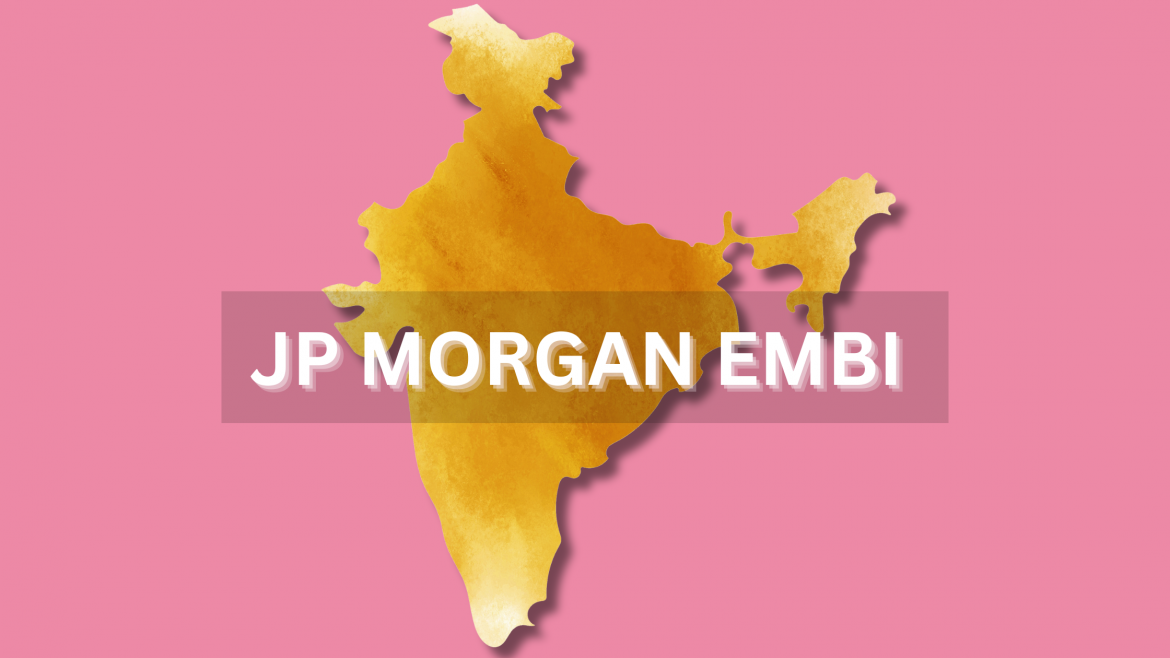The news came out very positive, and it showed a significant change in the value of the Indian rupee – the domestic currency, and the bond prices of the 10-year yield bonds of India. The change in numbers looks like this, the Indian rupee against the dollar opened at 82.83 from the close of 83.09 the previous day. This shows a notable appreciation of its value.
On the other side, the Indian 10-year bond yield lowered by 6 basis points to 7.101 from its previous close of 7.163. It means that when the bond yield falls, the price of the bond increases. That’s an interesting thing that happened on the news of its inclusion in the JP Morgan Emerging Market Bond Index.
While that’s about it, let’s learn what an emerging market bond index is as we continue.
What is a Government Bond?
What is an Emerging Market Bond Index?

The Emerging Market Bond Index, also shortly known as the EMBI, is an index measuring the performance of the emerging international market’s corporate and government bond total returns despite its risk compared to developed markets to create liquidity and meet structural requirements.
So you can consider this a benchmark index that is only dedicated to tracking debt instruments or the sovereign debts of emerging markets. If you wonder why they are risky, they are high-yielding compared to a developed nation’s sovereign debt.
As you are already aware, emerging markets want to grow rapidly by industrializing compared to developed countries, and where there is growth, there are essentially potential returns for foreign investors. Rather than adapting to the emerging market’s equity growth, which can be highly risky, investors can leverage the safest haven by investing in debt instruments. Moreover, as they are not related to any other asset class’s returns, it can turn out to be compelling for them.
Now you may think that this index looks very ideal for attracting foreign capital inflows. J.P. Morgan is the bank that first introduced the emerging market bond index.
But you may question why their credit rating is lower than the developed nation’s stable credit rating. That’s due to the factors that may affect the performance of the growth of emerging markets, such as economic and political risk. But at a slight additional risk, investors can leverage the potential yield from this, because you may imagine that an already developed nation would not make significant growth as compared to the developing ones, and India is one such example.
What are Corporate Bonds?
How are the Countries Even Selected in the Index?
For a country to be included in this index, it must consider the sovereign credit rating of that country. But even before that, the market capitalization of the government bonds is the basis on which it is weighed. It must first check three parameters to be included: firstly, the maturity of the bond must be at least one year; second, the outstanding face value must be at least $500 million; and third, proper guidelines must be followed for trading.
They can be issued in currencies like euros, dollars, yen, and even local currencies, but the exchange rates can impact the returns regardless of the unchanged interest rates of the debt instruments. With over 70 emerging countries listed in the index, it is periodically changed by adding new bonds that meet the criteria and removing those that do not meet the criteria.
Such a vast opportunity for an index with numerous bonds from different countries opens space for greater diversification by being invested in a portfolio with investments in different countries. It comes with lucrative yields, giving an overall good push to the portfolio. During the turbulence in the markets, the emerging markets will have a relatively low correlation or impact from the global equities. Via instruments like ETFs, direct investments, index funds, and mutual funds, entry into the EMBI bonds is easy.
What’s the Opinion of the Experts about the Inclusion?
The diverse opinions can be seen like this:
- The holdings from foreigners mean India is prone to sudden shocks.
- The currency and the domestic bond market may be largely impacted by huge inflows and outflows in the global market, which needs safeguarded measures.
- Direct investments such as active incomes can seem attractive, along with passive incomes via other means like ETFs, mutual funds, etc.
- The demand opens the door for corporations to borrow at a lower cost and can benefit different classes, such as equity.
- While emerging countries like China are struggling, it is an opportunity for India to grow well.
- India can expect a passive inflow of $40 to $50 billion if it gets included in three indices: the FTSE EM index, the JPMorgan EM index, and the Bloomberg Barclays EM bond index.
- It can improve the Indian currency in the market as well as strengthen the balance of payments situation.
That’s the whole view of the experts for the inclusion, looking into both the pros and cons; the cons outweigh the pros for any investor to consider being involved in the emerging market bond index.
The Wrap
It’s now about the inclusion in JP Morgan’s index, which is the first stepping stone that India has achieved. Going forward, inclusion in the FTSE EM index and Bloomberg Barclays EM bond index will soon be achieved, on which the growth of India to greater extents is no longer far.






